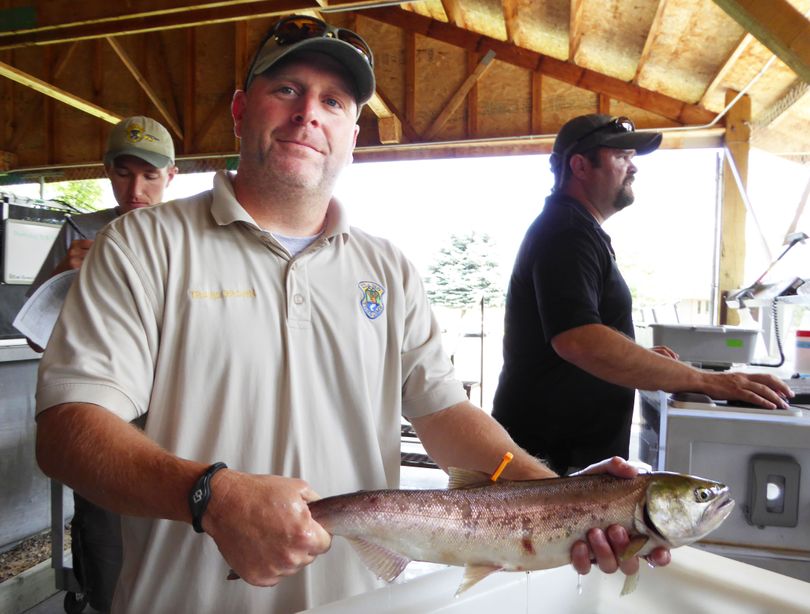Idaho sockeye rescue effort continues; numbers down

FISHERIES -- Idaho's endangered run of sockeye salmon run upstream 900 miles inland,gaining 6,000 feet of elevation on the way to spawn hear the Sawtooth Mountains. They're determined fish, but they've had a tough summer in a year of warmer than normal water and record-low flows.
From the brink of extinction, the world’s longest-migrating, highest-climbing, southern-most run of sockeye salmon has been making a steady comeback. But the partnership of state, federal, and tribal fishery scientists had to switch from restoration mode to rescue mode this year.
The anadromous Snake River sockeye in the video below is one of 51 collected this year at Lower Granite Dam, the last dam sockeye pass on their way to spawn in Redfish Lake in central Idaho.
The 51 were collected as an emergency rescue effort and driven to the Eagle Fish Hatchery of the Idaho Department of Fish and Game near Boise. Only 50 additional sockeye have been collected after reaching trapping sites near Redfish Lake on their own. Warrm water in the Columbia devastated the sockeye run as the fish returned from the ocean in July. In comparison, 1,516 were trapped near Redfish Lake last year.
From just 16 wild adult fish returning from the ocean between 1991 and 1998, plus 886 wild smolts that were collected from Redfish Lake and surrounding habitats between 1991 and 1993, and 26 “residual” (non-ocean-going) sockeye collected in the same area, fish habitat and production experts and geneticists mounted a program that today is on the cutting edge of species recovery in the world. As genetic techniques have improved over the last 30 years, the sockeye rescue effort is able to control individual fish parentage with such precision that fish fish produced today are nearly identical to the founding 16 wild fish.
To date, more than 10,000 adult descendants have been raised from the original 16 wild adults.
Related:
Biologist warns of climate warming effects on Idaho's wild salmon
At a Trout Unlimited meeting last week in Idaho, Bert Bowler, a fish biologist and former Columbia River policy coordinator for the Idaho Department of Fish and Game, said warming waters in the Pacific Ocean, the Columbia and lower Snake, pose a risk to the survival of the wild salmon that migrate to Idaho.
--Idaho Mountain Express
Links:
- Idaho Department of Fish and Game Snake River Sockeye Program
- NOAA Fisheries Manchester Laboratory Sockeye Program
